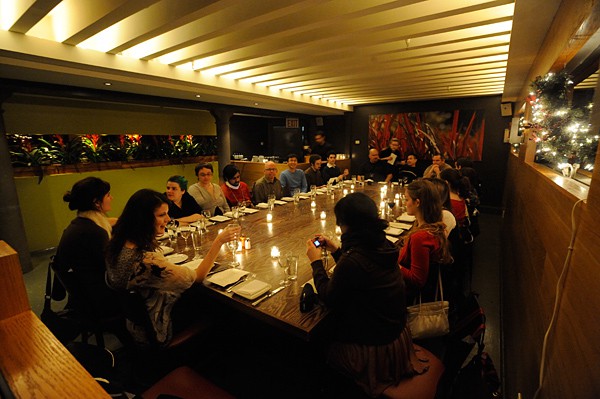Share
Happy Holidays from PhotoShelter!
One year ago at our PhotoShelter holiday party, there were only eight of us sitting around a table at Kelley & Ping in Soho. This year, we’re...


One year ago at our PhotoShelter holiday party, there were only eight of us sitting around a table at Kelley & Ping in Soho. This year, we’re blessed to finish off the year with twenty-three people that support the 19,000 PhotoShelter Personal Archive users and 8,500 PhotoShelter Collection users.
Tomorrow I’m spending Christmas watching a movie marathon in New York, in lieu of visiting the folks back home in Hawaii (lest you think I’m crazy, I didn’t go back because my parents’ house is being rebuilt right now). So how apropos that the New York Times recently wrote about the incredible cost of storing digital footage as revealed by a white paper created by the Academy of Motion Picture Arts and Sciences entitled “The Digital Dilemma: Strategic Issues in Archiving and Accessing Digital Motion Picture Materials.”
Consider the following findings:
– A conventional film master costs $1,059 per year to store
– A digital master costs $12,514 a year
Variety reports:
“Among many facts likely to give decisionmakers pause, the paper notes that the current 2K digital cinema standard is inferior to the quality of 35mm film and that digital storage media have a much shorter lifespan than film. The yearly cost of archiving a higher-quality 4K master is $104.28 per running minute as compared to $8.83 per running minute for film.”
And the astute observation that holds true for still photographers as well:
“Furthermore, since digital cameras don’t require reloading the way film cameras do, directors are shooting much more footage and there is more material than ever to be cataloged and stored.”
Film has a shelf-life of 100 years if properly stored. Unfortunately, many of the old celluloids have deteriorated because archival techniques weren’t very refined. So analog isn’t necessarily so much better than digital.
What’s the solution? There is none…yet. Changing media, formats, and standards make preservation an almost impossible task. This is the price for incredible technological change. Every new camera I’ve purchased has slightly different instructions embedded in the RAW format. The resolution of the files has increased at a rate that I would argue is faster than the corresponding drop in disk prices (or at least it feels that way).
So what have we really gained since the world went digital at the turn of the century? First, fidelity is better. We can record directly to digital, and the sensors and algorithms are incredible. The light sensitivity that I discussed in this entry has made it possible to capture images that couldn’t have been captured on film or even earlier generations of digital. And secondly, access to the data is near instantaneous. We don’t have to sift through shoeboxes because we can affix meta data directly to the files, and search, retrieve and distribute in a matter of seconds.
This is the reality that the information has brought about. It’s “better” in the ways that I’ve outlined, but only time will tell if it’s really made society better. Will the flow of information prevent wars? Will it improve living conditions? Will it generate better photography and a great appreciation of photography?
Check back with me in a year. In the meantime, enjoy a safe and happy holidays!
PS. Wanna read more on this sobering topic?
http://www.contentinople.com/author.asp?section_id=431&doc_id=140110


